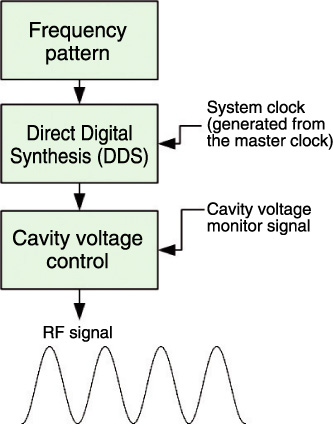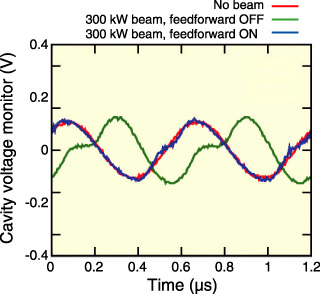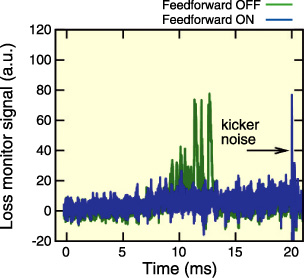
Fig.12-11 Block diagram of the core of the digital LLRF control system

Fig.12-12 Comparison of voltage waveforms without and with feedforward

Fig.12-13 Comparison of beam loss in the arc section without and with feedforward
The J-PARC Rapid Cycling Synchrotron (RCS) accelerates proton beams up to an energy of 3 GeV at a repetition rate of 25 Hz and delivers the beams to the Materials and Life Science Experimental Facility (MLF) and the Main Ring (MR). Beam commissioning is in progress with the aim of achieving the design output beam power of 1 MW, while the current beam power is 300 kW. The magnetic alloy (MA) cavity is employed to facilitate stable acceleration of the high-intensity beam. The MA cavity generates a very high accelerating field (20 kV/m), which cannot be generated by traditional ferrite cavities. The RF voltage of the MA cavity is precisely managed by a digital low-level RF (LLRF) control system. The digital LLRF control system (Fig.12-11) generates RF signals using the direct digital synthesis (DDS) technology by referring to the master clock of entire J-PARC facility. The accuracy of the RF signals generated using the DDS technology is over 1000 times higher than that of the signals generated using an analog circuit system, and this considerably improves the reproducibility of beam control. Therefore, beam extraction could be effected at a low-jitter of within 1.7 ns[1]: thus, the low-jitter performance of this synchrotron was the best among that of high-intensity proton synchrotrons around the world. Accurate beam timing helps beam injection to the MR and improves the experimental resolution in the MLF.
The wide-band frequency response of the MA cavity enables efficient beam shape control by RF waveform manipulation, which helps alleviate the space-charge effects of the high-intensity beam. On the other hand, the voltage distortion due to the wideband wake voltage of the high-intensity beam is an issue. We developed a multiharmonic RF feedforward system to solve this issue. The system consists of digital circuits that generate compensation signals from the beam signals collected by a wall current monitor, to cancel the wake voltages. By using the gain and phase patterns, the system responds to changes of the conditions during the acceleration period. We have established a methodology to optimize these patterns[2]. After optimizing the patterns, the voltage distortion (Fig.12-12) and the beam loss, which was observed during the 300 kW operation, were reduced considerably (Fig.12-13). These results are very promising for achieving the design beam power of 1 MW.